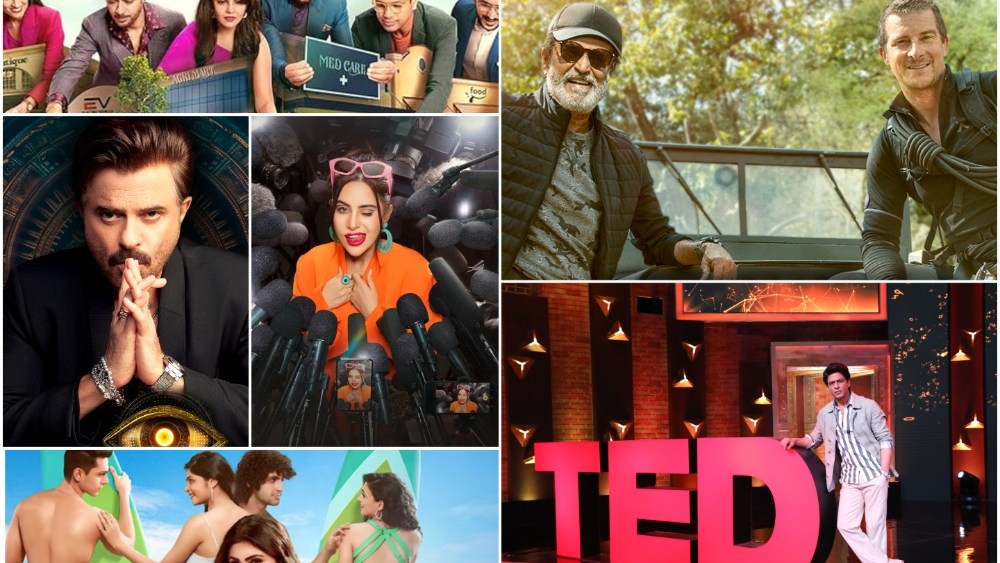How India Flavors Global Reality TV Formats
In the bustling landscape of Indian television, reality shows have carved out a significant niche, captivating audiences with a mix of international adaptations and homegrown formats.
Popular formats include “Bigg Boss,” the Hindi-language version of the global “Big Brother” format; “Indian Idol,” adapted from “Pop Idol”; “Khatron Ke Khiladi,” the Indian iteration of “Fear Factor,” “India‘s Got Talent,” the Indian version of the “Got Talent” franchise; and local versions of “Shark Tank” and “MasterChef,” to name a few.
Industry leaders weighed in on the enduring popularity of these shows and the potential for Indian formats to make waves globally.
“Reality, game and talent formats have always been popular in India, even in the ‘80s and ‘90s,” says Sameer Nair, managing director of studio Applause Entertainment. Nair is the television pioneer who, in 2000, brought “Who Wants to be a Millionaire?” to India, titled ”Kaun Banega Crorepati” (KBC), and hosted by legendary actor Amitabh Bachchan on Star TV. ”But with ‘KBC’ in 2000, the celebrity-powered version of officially licensed unscripted television took root in India,” he adds.
Nair points out that the success of international formats in India is often a combination of the original concept and local adaptation. “Obviously, it’s the format itself, but in every case, addition of the local Indian tadka [spicing] if you will has given the shows that special something that has endeared them to Indian audiences,” he explains. “In ‘KBC,’ it was [Bachchan’s] dramatic, even hypnotic Hindi-English baritone sharing of knowledge and wealth, in song and dance, it is a combination of incredible new talent and the nostalgic reminder of amazingly popular past and current Indian film music. In ‘Bigg Boss’ [the Indian version of “Big Brother” on JioCinema produced by Banijay Asia] Salman Khan’s unique quirky charm really holds together a voyeuristic viewing experience. In each case, something uniquely Indian adds to the magic of the original format.”
Nikhil Madhok, head of originals at streamer Prime Video India, echoes this sentiment, highlighting how streaming has transformed the unscripted content landscape. “Streaming transformed the space by exposing viewers to the wide possibilities that the nonfiction or unscripted format offered,” Madhok says. He notes that Prime Video has diversified its slate to include formats like true crime, reality and nonfiction series, often with a uniquely Indian perspective.
“At Prime Video, the customer is our North Star, and all our programming decisions are backwards to their tastes and preferences,” Madhok says. “Early on, we realized that Indian customers have diverse preferences. As a result, right from the start, unscripted content has been an important pillar of our programming and we have pioneered innovation in this space.”
Aradhana Bhola, managing director of content producer Fremantle India, attributes the popularity of reality formats to their emotional core. “Whether it is the awe we experience when someone exhibits their talent, the inner cheer that an underdog story elicits from us or the magic of seeing someone’s dream come true that kindles hope in us too, the aspirational and inspirational aspects of reality shows ensure the genre’s popularity,” Bhola explains.
Bhola cites the enduring appeal of shows like “Indian Idol” and “India’s Got Talent.” “As we began filming our latest season, I witnessed our judges [Shreya Ghoshal, Badshah and Vishal Dadlani] going crazy as a young housewife sang a medley of North Indian folk. The commonality — ordinary people with stars in their eyes who walk onto that stage and give it their all, irrespective of life circumstance. The power of that moment in time is palpable, real and undeniable.”
Mrinalini Jain, group chief development officer at content producers Banijay Asia and EndemolShine India, underlines the importance of adapting international formats to local sensibilities. “At Banijay Asia, we prioritize creating local versions of global formats that reflect the cultural nuances and emotional landscapes of Indian audiences,” Jain says. She cites “Bigg Boss” as an example, noting how it retains its core drama while incorporating Indian sensibilities.
Jain elaborates on the popularity of various genres: “Competition-based formats, such as ‘Bigg Boss’ and ‘Fear Factor: Khatron Ke Khiladi’ continue to be incredibly popular because they combine high drama with a survival-of-the-fittest narrative that appeals to both urban and rural audiences. We were overwhelmed to see the response that a bold and sensuous format like ‘Temptation Island’ received.”
Danish Khan, business head of streamer SonyLIV and Studio Next, highlights the role of reality shows in capturing national aspirations. “Reality shows or nonscripted shows are extremely popular in India, primarily as they capture the nation’s aspirations and the anxieties in all their complexity,” Khan says. He predicts that shows based on aspirations and lifestyle, like “Shark Tank” and “Million Dollar Listing,” will become increasingly relevant in the Indian context.
Khan also emphasizes the importance of localization: “For example, ‘Shark Tank India,’ it was important to localize the content in which we present the show. In India, entrepreneurship is generally not encouraged as a career, as ‘business’ is considered a forte of business families. Therefore, it was important to address this by focusing on first-generation entrepreneurs from across socio-economic groups — from the selection of the Sharks to our communication, we celebrated the journeys of first-generation entrepreneurs to engage with a broader audience and truly make ‘Shark Tank’ resonate in India.”
Alok Jain, president of general entertainment at Viacom18, which operates streamer JioCinema, points to the unique appeal of reality TV. “What sets reality TV apart is the powerful combination of relatability and unpredictability,” Jain explains. He notes that the interactive nature of these formats, allowing audiences to vote or influence outcomes, creates a stronger bond between viewers and shows.
Jain also highlights the success of “Bigg Boss” on JioCinema: “The launch of ‘Bigg Boss OTT’ on JioCinema has carved out its own identity by introducing features like 24-hour live feeds, multi-camera streaming, and enhanced audience interaction. These innovations create an immersive experience that particularly attracts younger viewers eager for deeper engagement with the content, ensuring the show remains relevant in today’s fast-paced digital landscape.”
As the industry continues to evolve, many executives see potential for Indian formats to gain traction internationally. Nair suggests, “Indian creators need to create universal ideas that are formattable, scalable and franchisable; that will take our ideas global.” Bhola from Fremantle India is optimistic, stating, “The clock is already ticking on that one!”
Jain from Banijay Asia shares this optimism, saying, “India’s storytelling prowess is well-established, and our reality formats have the potential to resonate globally.” Jain from Viacom18 concurs: “Our ongoing conversations for our owned IPs reinforce that there is a growing potential for Indian homegrown reality formats to be adapted globally, much like international formats have been for India. With the increasing interest in Indian culture, cuisine, and diverse lifestyles, unique Indian shows can resonate with international audiences.”
Madhok from Prime Video sums up the Indian industry’s approach: “Irrespective of the format — true-crime, reality or docu-follow, the story needs to entertain the audience, and enfold in a manner that keeps viewer interest alive from episode to episode. Just like fiction or scripted, unscripted and non-fiction too needs to build a strong connect between the audience and characters, in this case real people or subjects, taking the viewers on a journey with them.”


